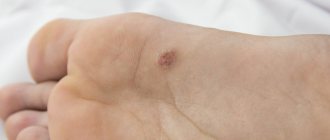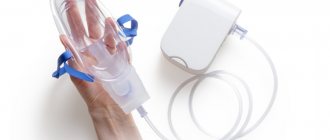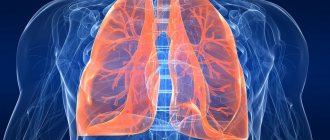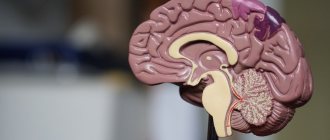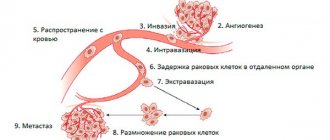Why is it so difficult for many people to quit smoking? The fact is that the addiction caused by smoking cigarettes is akin to a drug addiction, since addiction occurs at the physical level. Nicotine, which is part of tobacco, is included in the metabolism of a smoker. This is why it is so difficult to quit smoking without the help of specialists - for some time after getting rid of a bad habit, the body is rebuilt. And this manifests itself not only in positive, but also in negative aspects.
It is best to know in advance what happens to the body after quitting smoking in order to be prepared for these manifestations. Remember: your decision to quit smoking will help improve your health and improve your overall quality of life.
Negative aspects of quitting smoking
As we have already said, after quitting smoking, the body begins to rebuild its metabolism. As a result, the former smoker begins to experience a number of unpleasant symptoms. Fortunately, this only lasts for the first months, and after the metabolism normalizes, everything returns to normal.
Among the negative manifestations:
- emotional imbalance: tearfulness, irritability, aggressiveness, depressed mood;
- sleep disorders: insomnia, restless sleep, nightmares;
- susceptibility to colds due to a temporary decrease in immunity;
- unpleasant taste in the mouth after quitting smoking, associated with liver recovery;
- headaches, dizziness;
- weight gain, because against the background of emotional discord and the need to do something to drown out the craving for cigarettes, the former smoker begins to eat more.
To summarize
After getting rid of nicotine addiction, it is important to reconsider your entire lifestyle: start eating right, add as much physical activity as possible.
This will make lung cleaning more effective, minimize the likelihood of breakdowns and mood swings, and help maintain normal weight. Having given up cigarettes, many people notice a significant increase in appetite, which is caused by the restoration of olfactory and taste buds.
Even simple half-hour walks in the fresh air have the most beneficial effect on overall well-being, improve your mood and allow you to take each next step with renewed vigor towards completely ridding your body of the consequences of many years of nicotine addiction.
The first 14 days without cigarettes
The body's response to quitting smoking is most intense in the first two weeks after quitting tobacco. All symptoms that appear at this time are a consequence of the so-called nicotine fasting: the body is cleansed of nicotine, but the processes in which nicotine participated have not yet been rebuilt.
We will describe in detail, day by day, below the emotional and physical manifestations that will accompany quitting smoking, and the changes in the body at this time.
Then the symptoms will no longer change daily. A former smoker gets used to the normal state, and the changes will not be as bright and noticeable as in the first days. Therefore, further we will describe the consequences of quitting nicotine on a monthly basis.
First day
At the beginning of the journey, a person who is trying to quit a bad habit feels an emotional uplift, is determined to get rid of the addiction and is confident in future success. Against this background, the craving for nicotine is absent or easily blocked by willpower and distraction by other things.
The carbon monoxide content in the blood gradually decreases and, on the contrary, the oxygen content increases. A person feels that it has become easier to breathe; an excess of oxygen can even cause slight dizziness. For many experienced smokers, this ease of breathing becomes a revelation.
Some experience a decrease in appetite, weakness, and slight anxiety. You may have difficulty falling asleep or have trouble staying asleep.
Quite often it is recommended to keep a diary to record all stages of the addiction recovery process.
Second day
Symptoms of nicotine starvation begin. A severe cough and shortness of breath appear.
The ciliated epithelium of the lungs begins to restore its functions. Sputum production is reduced. The inflamed intestinal mucosa begins to regenerate. Appetite decreases, and mild abdominal pain may occur. There may be an increased urge to urinate.
There is almost no change in the psychological state. The person is still on the rise, but slight irritability appears, which is quite easy to suppress with an effort of will. Self-hypnosis techniques help, constant reminders to yourself why the decision was made to quit (recovery).
Sleep is often restless; nervousness and obsessive thoughts can cause problems falling asleep. You may feel drowsy during the day.
The third day
The tone of blood vessels increases, blood supply to the heart and brain improves. Regeneration of the bronchial mucosa begins, normalization of the pancreas.
The physical craving for cigarettes decreases slightly. While these changes are invisible, they occur at the cellular level.
The skin becomes dry, begins to peel, and small pimples (dry) may form.
Appetite increases, cravings for sweets appear (or intensify). Heartburn may bother you.
Some people experience tinnitus, dizziness, and a feeling that their heart is “squeezing.” Symptoms of psychological dependence intensify. A former smoker becomes more and more nervous, it is difficult for him to concentrate on anything, his thoughts always return to the cigarette.
Fourth
By this time, dizziness usually goes away, and the blood supply to the brain normalizes. But I still have concerns about tinnitus and surges in blood pressure. The face and fingers may swell.
Cough continues; Often a person has the feeling that there is a viscous mucous lump in the throat - the latter means that a restructuring of the system for producing bronchial secretions is taking place in the bronchi.
Emotionally, aggressiveness decreases and depression goes away. Many patients at this stage say that they expected more serious manifestations of nicotine withdrawal.
The sleep is still disturbing and superficial. Increased appetite and cravings for certain foods persist.
Fifth
Regeneration of the respiratory system continues, normalization of the functionality of the bronchi and lungs. But you still feel a lump in your throat, and dark mucus may come out when you cough
By this time, little remains of the emotional high of the first day. There is a risk of breakdown, which is further facilitated by deteriorating health. It is important to remember that all quitters experience this, and many quite successfully.
Small microcracks begin to disappear from the surface of the tongue. The perception of taste is restored.
Sixth
The functioning of the stomach and pancreas continues to normalize. Increased thirst often appears, and with it frequent urination. Some people experience bitterness in the mouth and painful sensations in the liver area. Appetite is reduced.
Many people note sweating, dry mouth, trembling hands, and nausea during this period.
Those who quit smoking become nervous, aggressive, and sometimes whiny. Every little thing causes an emotional reaction, and self-control decreases. You can consult your doctor and start taking anti-anxiety medications.
Seventh
The body is rebuilding to work without nicotine, although mucus continues to be released when coughing, and the feeling of a lump in the throat has not yet gone away. There may be occasional bowel movements. Fatty foods are poorly accepted (heartburn may occur), but overall appetite increases. The skin remains dry and flaky.
“Cigarette syndrome” and other provoking situations.
Tenth
Internal motivation is falling, so now those who quit smoking really need the support and encouragement of loved ones and those around them. A person can hardly tolerate people smoking nearby.
The restoration of the immune system begins. The cough continues. If light yellow or gray clots come out during a cough, you should definitely contact an otolaryngologist. A cough can be softened with a warm drink.
Eleventh
More oxygen enters the body, which can cause dizziness, trembling of fingers, and headaches.
Emotional sensitivity, temper, or vulnerability for any reason persists.
There is a desire to test yourself by smoking “just one cigarette” and remember its taste. At the same time, the smell of tobacco smoke is disgusting.
Appetite is still increased.
Twelfth
The condition of the skin improves, largely due to the normalization of blood circulation. A healthy complexion returns.
The cough softens, and chronic inflammation in the lungs gradually disappears. Intestinal functions are restored.
The neuropsychic state has not yet improved, which means that the person still greatly needs the support of loved ones.
Thirteenth
Malaise of uncertain localization may occur, a feeling of heaviness in the back of the head, and weakness may appear. There are surges in blood pressure.
Usually during this period a person strives to reach the two-week mark, so the risk of relapse is not very high - the desire to take a cigarette is suppressed by this desire.
Fourteenth
The cough begins to subside, the complexion continues to improve, and the yellow coloring of the fingers goes away. Vegetative-vascular disorders may still be present - lethargy, drowsiness, weakness.
Two weeks is the first serious milestone, and it is psychologically important not to break down on this day. A common mistake is to assume that one cigarette after 14 days of abstinence will not harm. In fact, it can derail the entire smoking cessation process.
Withdrawal syndrome
Nicotine toxins change the functioning of the human body so much that their deficiency leads to a sharp malfunction of many organs and systems. This phenomenon refers to withdrawal syndrome, which is characterized by:
- Weakening of the immune system. For a heavy smoker, the lack of nicotine causes severe stress, weakening the body as a whole. A person becomes defenseless against various kinds of infections and viruses. He is diagnosed with frequent colds, viral and bacterial diseases of the oral cavity, skin, and his general health deteriorates.
- Unstable functioning of the nervous system, severe psycho-emotional state. Against the background of a lack of nicotine, irritability, aggression, and, in some cases, apathy and depression increase. A person is tormented by insomnia and nightmares, and is haunted by the desire to smoke at least one cigarette. At this time, the help of family and friends and a psychologist is very important for a former smoker.
- Cough accompanied by dark mucus. This phenomenon is explained by the need to remove cigarette combustion products from the respiratory system.
- Dizziness, painful sensations in the head and abdominal area, of a spastic nature and observed about 2 weeks after the last smoking. The lack of usual portions of nicotine provokes disruption of the gastrointestinal tract.
- Weight gain. An increase in body weight after stopping smoking occurs due to a person’s unstable emotional state, which he tries to normalize with the help of an excess of tasty food.
Changes in the first month after quitting smoking
Let's see how the body recovers after quitting smoking in the second half of the first month.
Feel. Those who quit smoking are still bothered by dizziness, headaches, and blood pressure surges - the brain now receives more oxygen and has not yet adapted to this. The cough with sputum production becomes weaker towards the end of the month. The perception of smells and tastes of food is normalized - for someone quitting smoking, this is felt as a sharpening of the senses of smell and taste, since they were previously dulled. Weight gain is possible due to improved appetite. Since the regeneration of the gastrointestinal mucosa is still ongoing, abdominal pain, constipation, and diarrhea may still bother you.
Changes in the body. The body is restored at the cellular level, harmful substances, for example, products of the processing of nicotine tar, are intensively removed. Feeling better. Regeneration of the bronchial mucosa occurs.
Blood cells are renewed: leukocytes - faster, red blood cells - slower. Vascular tone increases. This improves immunity and tissue nutrition. The yellowness from the fingers continues to disappear, and the complexion improves.
Psycho-emotional state. Aggression and irritability are less than in the first days. Psychological dependence on smoking still persists, and symptoms of “breathing deep” syndrome are present. Normal functioning of the stomach and intestines was restored. Liver regeneration begins (from 5 months).
Psycho-emotional sphere. The mood is cheerful and stable. Sleep is normalized. The craving for cigarettes is easily suppressed, because at this point it represents only a slight desire to return to a familiar ritual. A person develops other habits with which he replaces the ritual of smoking. But breakdowns are still possible under provoking circumstances.
Literature:
- Yagodinsky, Viktor Nikolaevich. About harmful nicotine and alcohol: a book for students: [trans. from Russian] / V. N. Yagodinsky. - Chisinau: Lumina, 1987. - 172, [2] p. : ill.; 16 cm.
- Gaivoronsky, I.V. Anatomy of a healthy and unhealthy lifestyle [Electronic resource]. - St. Petersburg: SpetsLit, 2014. - 182 p. : ill.; ISBN 978-5-299-00599-8
- Arkhangelsky, Vladimir Georgievich. About the dangers of smoking / Ph.D. honey. Sciences V. G. Arkhangelsky. — 4th ed. - Moscow: Medgiz, 1954. - 24 p.; 20 cm. - (Popular scientific medical literature).
- Entin, Gennady Mikhailovich (1924-). How to quit smoking? / G.M. Entin, Dr. med. Sciences, Yu.B. Tarnavsky, Ph.D. honey. Sci. - Moscow: Knowledge, 1977. - 95 p. : ill.; 16 cm. - (People's University: Faculty of Health; No. 3).
Second six months
In the seventh and eighth months after quitting smoking:
- the restoration of olfactory receptors continues, so the former smoker discovers more and more new shades of smells and tastes;
- cough becomes rare, as the regeneration of cells of the respiratory system is in full swing. Lung capacity increases even more. The hoarseness of the voice goes away as the vocal cords are restored;
- the yellow plaque of a smoker gradually disappears from the teeth;
- liver cell restoration continues;
- the psycho-emotional state is still stable and cheerful.
Ninth month
This is a month of crisis, in which you need to be especially careful not to break down. On the one hand, the habit of smoking has not yet been completely destroyed, on the other hand, the person has already forgotten all the negative aspects of smoking, has become accustomed to feeling good, and he has the illusion that nothing bad happened.
Tenth month
During this period, patients often have realistic dreams that they are smoking again, and this leaves a painful feeling upon awakening.
Eleventh month
Thoughts about smoking come very rarely and are easily dismissed by the mind as something unnecessary. Psychological dependence has almost completely disappeared.
Folk recipes
There are many folk recipes for remedies that help cleanse the lungs of former smokers. However, when using them, you need to take into account that such products should be used regularly for a long time to get the effect.
- Honey and aloe. Mix 1 tbsp. l. honey and 2 tbsp. l. aloe juice Drink 1 tsp three times a day.
- Oatmeal broth. Pour 200 g of oats with half a liter of milk and simmer over low heat for three hours. After straining, drink 1 glass before bed.
- Liquorice root. Grind one root and fill it with half a liter of water. After boiling for 30 minutes. keep on low heat. After straining, mix with 3 tbsp. l. honey Drink a glass a day. You can also prepare a similar decoction by mixing one part each of licorice and marshmallow root.
- Spruce shoots. Chop young shoots of pine or spruce and mix with 300 g of alcohol. After a week of infusion, drink 30 drops before bed.
- Elecampane root. Grind one root and pour half a liter of boiling water over it. Leave for an hour, then strain and drink 1 glass twice a day.
One year after quitting smoking
A year without cigarettes is a serious achievement. During this period, the body usually recovers so much that the risk of stroke (by 30%), heart attack (by 50%) and the likelihood of lung and liver cancer (by 80-90%) is reduced. Women who have become pregnant by this point do not have to worry about the risk of miscarriage - its probability is almost the same as for non-smokers.
The risk of relapse is minimal, but it is worth remembering what you went through to get to this point. It is not worth risking such an achievement for the sake of one cigarette.
Signs of cleansing
A typical sign of systematic cleansing of the body is a constant cough and sputum discharge. In this way, the body tries to cleanse the inner surface of the lungs and bronchi from harmful deposits.
Over time, the cough decreases and breathing becomes easier. It becomes easier to wake up in the morning, and a good appetite returns. In addition, mood swings may occur throughout the cleansing period. They should not be considered an anomaly and if they occur, you should simply try to smooth them out by taking specialized medications, long walks, breathing exercises, etc.
How to help your body when quitting smoking
Three things will help reduce the intensity of unpleasant symptoms when quitting smoking and recover faster. This:
- Fresh air. Walk in parks and forests more often, ventilate the room more often. Play sports outdoors. This helps clear the lungs faster and restore normal functioning of the respiratory system.
- Special food. Include in your diet foods rich in vitamins C, A, E, and rutin - with their help, nicotine will be removed from the body faster. To normalize the functioning and cleanse the gastrointestinal tract, potato decoction, mucous decoctions of flaxseed, rice or oatmeal are useful.
- Sport. Not immediately (in about six months), but you need to include physical exercise in your schedule. This will strengthen the heart, speed up metabolism, and increase lung capacity. In addition, they have a positive effect on overall well-being due to the release of endorphins.
Basic methods of lung cleansing
After completely quitting cigarettes, the human body experiences stress in some way - withdrawal syndrome. Traditional medicine offers proven recipes for remedies that can reduce its manifestations and also effectively cleanse the lungs.
Among them, I would especially like to mention oats, onion syrup, garlic, pineapples and herbal infusions. For greater effect, you can supplement them with the healthy habit of regularly visiting the bathhouse to make the cleansing process comprehensive.
Important. Without a medical history and consultation with your doctor, it is better not to take either traditional medicine methods or medications. This can lead to serious complications!
Do you need psychotherapeutic help when quitting smoking?
Of course, willpower, determination and a willingness to overcome difficulties can greatly help a person cope with addiction and restore the body after quitting smoking. However, cravings for cigarettes associated with psychological dependence may still persist.
Some smokers find themselves having to try again to quit the bad habit. This happens when a person returns to it a few weeks or months after quitting smoking. Only a small percentage of people can truly quit smoking permanently without help. Therefore, it is extremely important to seek help from a psychotherapist in a timely manner.
During the consultation, the specialist will explain the consequences of consuming tobacco smoke tar and nicotine and will help to form a strong motivation to quit smoking. With the support of a doctor, it will be easier for a smoker to overcome psychological dependence; he will learn to get out of stressful situations without the help of cigarettes. During sessions, the specialist uses techniques that promote relaxation, overcome psychological discomfort and change well-being, making the process of quitting smoking as painless as possible.
As a result, with the patient’s desire, the support of loved ones and the help of a qualified doctor, the person’s desire to smoke is suppressed, and the effect persists even several years after the end of psychotherapy.
Bath and sauna
A visit to the sauna and bathhouse will help remove toxins and clear smoke from your lungs. When exposed to high temperatures, the pores on the skin expand, and harmful substances come out through them along with sweat. And in order to speed up the cleansing of the lungs, it is recommended to breathe essential oils in the bath. The selected essential oil can be diluted in a small amount of water and poured onto hot stones. In the bath, to cleanse the lungs, it is recommended to use eucalyptus, cedar, pine, mint, and tea tree oils.
It is recommended to use a broom in the bath, and after the procedures drink tea with herbs that have expectorant properties. To get the desired result, you need to visit the bathhouse once a week for two months.
Why do this?
So that the alveoli - hundreds of millions of tiny bubbles, and the ciliated epithelium, which makes up most of the surface of the respiratory tract, can be cleaned and work normally. You can wait for years for the tar dirt to go away on its own, leaving you an unhealthy person and incapable of living a full life: everyone will decide for themselves whether it’s worth cleansing the lungs or “it will go away on its own.”
One thing to remember: it takes time and effort, but clearing the lungs does not work the same for everyone. 3-4 months may be enough, but others need 1-3 years. First cleanse, then repair and strengthen, but first, see a doctor: you will most likely need antibacterial and expectorant medications - smokers' lungs are usually full of germs.
Is it possible to clean it completely?
It is possible to completely clean a smoker's lungs if there are no irreversible changes. These include persistent dilatation of the bronchi - bronchiectasis, compaction of the lung tissue - pneumosclerosis, fibrosis. This can be found out only after examination by a pulmonologist. He conducts an examination, listens to the lungs and prescribes:
- chest x-ray or computed tomography;
- fibrobronchoscopy (examination of the bronchi with an endoscope);
- spirometry to assess respiratory function;
- ECG to detect cardiac complications;
- General blood test, biochemical.
Only based on the results of all studies can one accurately determine the extent of changes in the lungs due to smoking. Cleansing will be required in any case, but if the stage is advanced, it will be incomplete. This means that there will remain a tendency to inflammation of the respiratory tract during hypothermia, during the season of viral infections.
Watch this video about the dangers of smoking:
Preparing for cleaning
The main condition for cleansing the pulmonary system is free time. You should act slowly, step by step. You won't be able to get rid of mucus all at once. You cannot allow the accumulated mucus to quickly clear, as the body may react incorrectly to external interventions and begin to secrete mucus in even greater quantities.
In such a situation, the patency of the lungs is impaired, which is fraught with the development of lung cancer. Traditional medicine will tell you how to cleanse a smoker’s lungs at home. Medical practice shows that treatment should be started using folk remedies, since they are less aggressive for the body and do not cause adverse reactions.
Any cleansing procedure aimed at internal organs requires certain preparation.
To speed up results, you must follow these recommendations:
- A week before the start of lung cleansing, you should balance your diet, give up fatty and smoked foods, reduce the consumption of spices and salt, and focus on plant foods.
- Avoid physical and strength activities (going to the gym, running, working with dumbbells).
- 3-4 days before the start of the procedure, exclude dairy products, as they contribute to the formation of sputum.
- It is necessary to observe the water regime. Water will help the body get rid of waste and toxins; for this, you should drink at least 2 liters of water every day.
- Eliminate cigarettes completely.
- In the evening before starting the cleanse, drink a cup of herbal tea to stimulate bowel function. You can use the following herbs: elderberry; anise; fennel; dandelion; plantain; nettle; flax seed; buckthorn.
Inhalations
Inhalations are an ideal way to help the lungs get rid of accumulated cigarette tar. For this procedure, herbal decoctions, vegetable oils, medicinal mineral water and special salts are used.
Inhalations have a positive effect by thinning accumulated mucus and removing it from the lungs.
When inhaled, beneficial substances enter the bronchi, thereby restoring the functioning of epithelial cilia, thanks to which the lungs are cleansed of dust and nicotine.
The following medicinal herbs can be used for the procedure:
- wild rosemary;
- buds and branches of coniferous species;
- chamomile;
- coltsfoot;
- juniper;
- lavender;
- mint.
The procedure is quite accessible to everyone and is carried out at home. It is enough to brew one selected herb and, bending over the container, inhale the herbal steam for 10-15 minutes. The duration of the course is 21 days.
An excellent alternative to herbs is essential oil raw materials: oil of pine needles, fir, eucalyptus, marjoram. For inhalation, you need to boil water, add a couple of drops of the selected oil and bend over the hot water to inhale the steam for 10 minutes.
How to clean a smoker's lungs at home
At home, you can cleanse your lungs using folk remedies: herbs, medicinal teas, inhalations, honey, and also a visit to the bathhouse.
Inhalations
Inhalations to cleanse the lungs are one of the most effective methods of home recovery, because:
- the drug or decoction of medicinal herbs enters directly into the bronchi;
- using saline solution or mineral water, you can additionally moisturize the respiratory tract and thin the mucus;
- if an exacerbation occurs, the inflammatory reaction is quickly relieved;
- the introduction of bronchodilator medications helps deep penetration of the inhalation solution.
The most effective means to cleanse the lungs after smoking, and their dosages and methods of administration are indicated in the table.
| A drug | Purpose of inhalation | What to spend | Dose for 1 procedure | Saline solution | How much per day | A course of treatment |
| Ambrobene, Lazolvan | Facilitation of sputum production | Nebulizer | 3 ml | 2 ml | 2 | 10-15 days |
| Fluimucil, ACC-inject | Thinning sputum | Nebulizer | 3 ml | 3 ml | 2 | 7-10 days |
| Soda buffer | Moisturizing the respiratory tract, cleansing | Nebulizer | 2-3 ml | 2-3 ml | 3 | 15-20 days |
| Ventolin | Relieves bronchospasm | Nebulizer | 2.5 ml | 3 ml | 4 | 5-7 days |
| Herbal decoctions: thyme, eucalyptus, sage, oregano | Eliminates inflammation, facilitates coughing | Steam | 500 ml of infusion (a tablespoon per 500 ml of boiling water, leave for 1 hour) | Not needed | 2-4 | 2-3 weeks |
Folk remedies
Folk remedies for cleansing the lungs are thyme, fireweed, violet, and a collection of several plants. Medicinal tea, onion syrup, decoction of oat grains, and bay leaves have a good effect.
Herbs and preparations from them
Herbal infusions and decoctions from plant collections will help cleanse the bronchi. To do this, you can use one herb from the list:
- pine buds,
- liquorice root,
- plantain,
- violet,
- marshmallow root,
- fennel seeds,
- thyme (thyme),
- blooming Sally,
- elderberry flowers,
- coltsfoot leaf,
- elecampane rhizome,
- oregano,
- calendula flowers.
Pine buds Licorice root Plantain Marshmallow root Thyme Elder flowers Elecampane rhizome Calendula flowers Fennel seeds
Plant materials are dried, crushed and poured with boiling water in the proportion of a tablespoon to a glass of boiling water. Infuse in a sealed container for 45 minutes, filter and take warm half an hour before meals, a third of a glass three times a day.
If the root of the plant is used, then a decoction is prepared in the same proportion, but before infusion it is boiled for 10 minutes over low heat. The course of treatment is 1 month. After this, they take a break for 10 days, then repeat the procedure, but take another plant.
To quickly cleanse the body of nicotine, we recommend a collection that has a blood purifying effect, stimulates the liver, kidneys and intestines, and facilitates coughing up phlegm. Its composition:
- Butcher's broom fruits – 20 g,
- nettle leaf – 15 g,
- Joster fruits – 5 g,
- rose hips – 10 g,
- milk thistle fruits – 20 g,
- thyme herb – 20 g,
- chokeberry fruits – 10 g.
For 300 ml of boiling water, take a heaped tablespoon of the mixture and place it in a thermos overnight. In the morning, filter and take 100 ml half an hour before meals 3 times a day. The course of treatment is 45 days, then a break is needed for 3 weeks.
This composition has a strong cleansing effect, so alcohol, strong coffee, spicy, fried and salty foods are prohibited while taking it. A predominantly dairy-vegetable diet is recommended; you should drink at least 1.5 liters of drinking water per day.
Teas
For former smokers, it is recommended to drink up to 3-4 cups of quality green tea. It has a good antioxidant effect. This means that the biologically active substances included in its composition help restore bronchial cells after damage, as well as protect tissues from cancerous degeneration.
You can also prepare a drink based on black tea. For 50 g of tea leaves, take 5 g of oregano, mint and linden blossom. It is brewed in the usual way (a teaspoon per glass) and you need to drink at least 3 such servings per day. The time of use is not limited; to enhance the effect, instead of sugar, add a tablespoon of buckwheat or linden honey to a warm drink.
Onion remedy
A folk remedy such as onion syrup has not only a cleansing effect, but also an antimicrobial effect due to phytoncides. It is taken once a week for 2 days in a row. To prepare, two small onions or one large one are cut into small cubes and sprinkled with 5 tablespoons of sugar. This mixture is placed in a dark place in a closed container for a day.
The resulting solution should be placed on a sieve or gauze and drunk a tablespoon 4 times a day before meals with 100 ml of water.
Onion syrup
Oat infusion
For oat milk you will need a glass of grains. They need to be filled with 2 glasses of milk, preferably goat milk, and put on the lowest heat, cooking until its volume is reduced by 2 times. The finished broth is drunk 1-2 times, and the grains are mixed with honey and consumed 2-3 tablespoons an hour before meals. This composition has a beneficial effect on the immune system and facilitates the discharge of sputum.
Bay leaf decoction
Bay leaves have the ability to cleanse a room of germs and viruses, so you need to spread a few leaves around the room and place 1-2 under the pillow. To prepare the infusion, take 7 leaves and 250 ml of boiling water. Leave until the solution cools in a tightly sealed container. You need to take 30 ml 3 times a day 40 minutes before meals for 2 weeks, then you need a break for 7 days.
This cleansing is contraindicated for pregnant women and for diseases of the stomach and pancreas.
How to get rid of phlegm with honey
Honey has proven medicinal properties, as it helps get rid of phlegm in the lungs, makes it more liquid, and stimulates excretion. An important feature for former smokers is that the honey drink helps restore the functions of the ciliated epithelium, that is, it starts the process of self-cleaning of the bronchial tree.
Prepare a mixture of equal parts honey and lemon juice. An hour before each meal, pour a tablespoon of warm water (no higher than body temperature) and drink in small sips. The course of treatment continues as long as there is a cough. This treatment is contraindicated in case of an allergic reaction to citrus fruits and bee products. Its sign may be increased shortness of breath or swelling of the face.
If well tolerated, pine honey can be an effective therapeutic and prophylactic remedy for smoker's bronchitis . For this:
- They take young cones and grind them in a meat grinder.
- Mix with an equal volume of liquid honey.
- Place in the refrigerator to infuse for 5 days.
Pine honey
Then a teaspoon is poured into a glass of boiled water at room temperature and taken on an empty stomach once a day from late autumn to early summer.
Visiting the sauna to remove resins
Hot steam in a bath or sauna not only helps to enhance the body's cleansing of tars through the lungs, but also stimulates sweating, which helps quickly get rid of toxins. Important conditions for the procedure to be therapeutic:
- between visits to the steam room, be sure to drink tea with linden or mint, oregano, you can add a little honey to it;
- alcohol is prohibited;
- A massage with a birch broom has a good healing effect;
- Essential oils will help enhance the effect of steam; they are added to a container with hot water: spruce, juniper, fir, thyme, eucalyptus.
Patients with frequent exacerbations of bronchitis are not recommended to alternate the steam room with a dip in cold water, and it is also important to rest after the bath for at least half an hour to prevent hypothermia due to excessive sweating.
Watch this video about how to cleanse your lungs from smoking and bad ecology:
Nutrition
Regular consumption of healthy foods is one of the main conditions for maintaining healthy lungs. The diet should always consist of fresh, natural products containing the nutrients necessary for the body, a complex of vitamins and minerals.
Nature has taken care of man, endowing him with antioxidant powers in the fight against viruses, infections, and external pollution.
When the functioning of the lungs is impaired, these same forces are often lacking, as the oxidative process starts and the body begins to weaken. Therefore, you should consume foods rich in antioxidants. It is especially worth focusing on plant foods in bright colors (orange, yellow, rich red).
This may include:
- apples;
- carrot;
- Bell pepper;
- broccoli;
- spinach;
- green leaves of vegetables;
- beet.
All these products are rich in beta-carotene and vegetable proteins, which provide the necessary nutrition to the lung tissue and promote the formation of new cells.
For example:
- Beets activate and enhance the drainage function of the lungs, normalizing gas exchange processes.
- Do not ignore milk products, including fermented milk. They contain large amounts of organic calcium, which is also necessary for lung cells.
- Magnesium, which predominates in green vegetables and leaves, stabilizes the functioning of the lungs, provides nutrition to the cells, preventing them from working for wear.
- Garlic and onions are a storehouse of vitamins and antioxidants that destroy pathogenic bacteria and are aimed at fighting lung infections.
- Fresh pineapple contains an enzyme called bromelain, which actively fights tubercle bacilli.
- For proper functioning of the lungs, a lot of vitamin C is required, which protects the body from various types of inflammatory processes. It is found in citrus fruits and rose hips.
- If a lot of viscous mucus has accumulated in the lungs, then the organic acids of hawthorn and iodine, which sea kale is rich in, will come to the rescue. These products help thin mucus and remove it from the body.
- Particular attention should be paid to water, as it helps the body get rid of internal debris. It is recommended to drink 2-2.5 liters of clean water per day.
The following should be removed from the diet:
- salted and smoked products;
- spices;
- rich meat and fish broths.
These foods retain water in the body, which leads to swelling. They prevent the passage of mucus, increasing its formation, which can lead to bronchospasm. You should also limit your intake of coffee, black tea and sugar, as these foods weaken the immune system, preventing the body from fighting toxins, healing and getting stronger.
Gymnastics
Breathing exercises will tell you how to cleanse a smoker’s lungs at home. This method is one of the most effective, which can also be used in combination with inhalations, herbal preparations, and drug treatment.
Respiratory exercises have a positive effect not only on the lungs, but on the entire body as a whole. There are many respiratory cleansing techniques aimed at improving the functioning of external respiration.
A number of effective exercises are offered:
- Slowly, through your nose, inhale deeply. Rise up on your toes and hold the air as long as you can, without any effort on yourself. Exhale slowly while lowering yourself onto your feet. When performing this exercise, it is important to concentrate on inhaling - imagining how vital energy fills the whole body, while exhaling - move your attention to the solar plexus area. It is advisable to perform this exercise every day, morning and evening, 15-20 times.
- Take a deep breath. Hold your breath for a couple of seconds and exhale the air in small portions as if in bursts. With each push, the stomach should be pulled in. This cleansing exercise is aimed at eliminating residual air from the alveoli (with emphysema). The exercise is performed 10 times a day.
- Take a lying position on your back, take a deep breath, while inflating your stomach, and hold your breath for a couple of seconds. Next, begin to release air through tightly compressed lips, forcefully pushing it out in small portions. With each exhalation, vibrations from the diaphragm should move to the stomach (this happens during laughter). All toxins fly away from the shaking organs, and the cleansing process begins.

